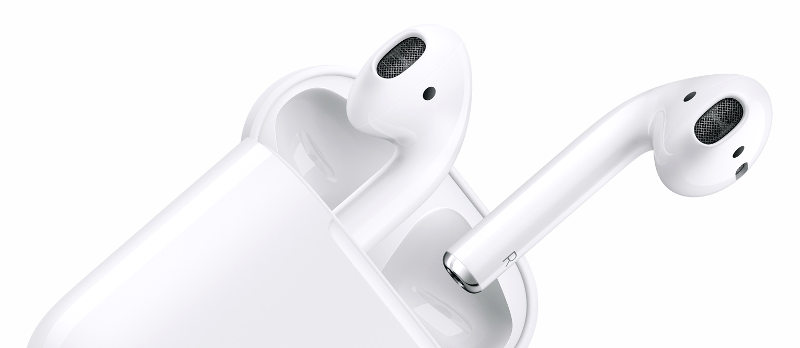
A new Apple patent reveals potential features of the future AirPods and one of the most interesting parts of the filing involves interchangeable earbuds that are equipped with “at least one” biometric sensor, which could detect left/right ear placement and accordingly adjust audio, as reported earlier.
Apple has long been in the pursuit of that perfect earbud that would fit all ears. The current three-part configuration of the current AirPods are environmentally responsible and relatively easy to manufacture, evolving AirPods from a separate left / right unit to a single component should lower costs and make getting a replacement AirPod much simpler.
This patent filing comes just days after a new report from Kuo which said that the updated AirPods that are set to launch in the first quarter of 2019 will include wireless charging. It is clear the next AirPods refresh will mostly focus on improving upon the current design. But this patent shows that in 2020 and beyond, Apple is interested in creating an ultimate earbud that can fit anybody, with an array of biometric sensors capable of tracking health measurements along with detecting ear placement.

The patent describes how biometric sensors need to be pressed firmly against the skin to work best, and foam is used to expand the bud against the ear canal. This means it is a departure from the traditional plastic mold used by Apple in both EarPods and AirPods.The patent mentions the ability to single-channel audio from a multi-channel source to a single bud.
The Apple patent reads:
This application relates to earbuds configured with one or more biometric sensors. At least one of the biometric sensors is configured to be pressed up against a portion of the tragus for making biometric measurements. In some embodiments, the housing of the earbud can be symmetric so that the earbud can be worn interchangeably in either a left or a right ear of a user. In such an embodiment, the earbud can include a sensor and circuitry configured to determine and alter operation of the earbud in accordance to which ear the earbud is determined to be sitting in.
